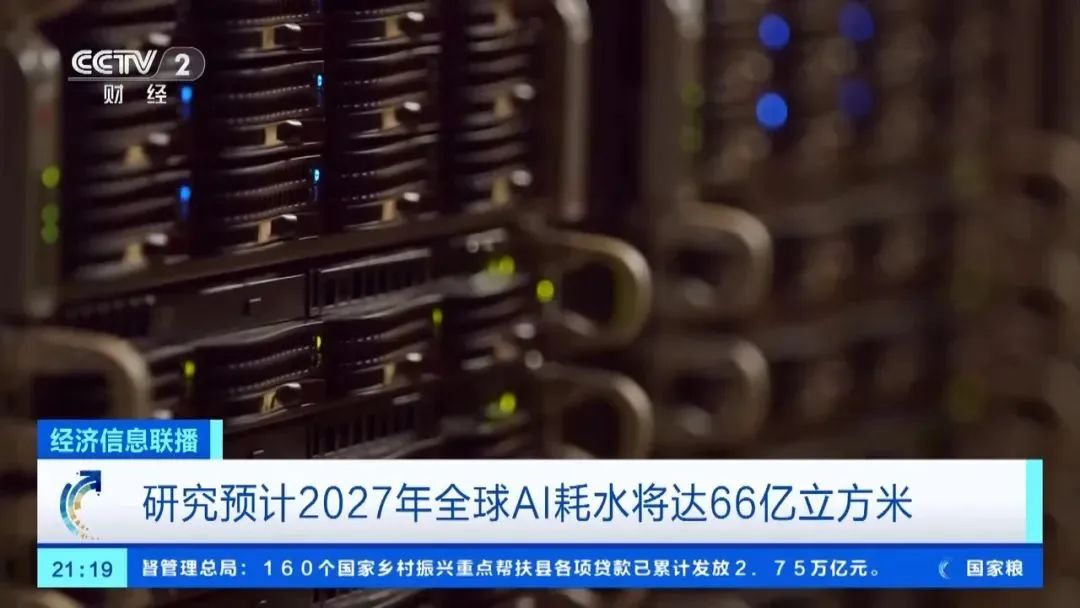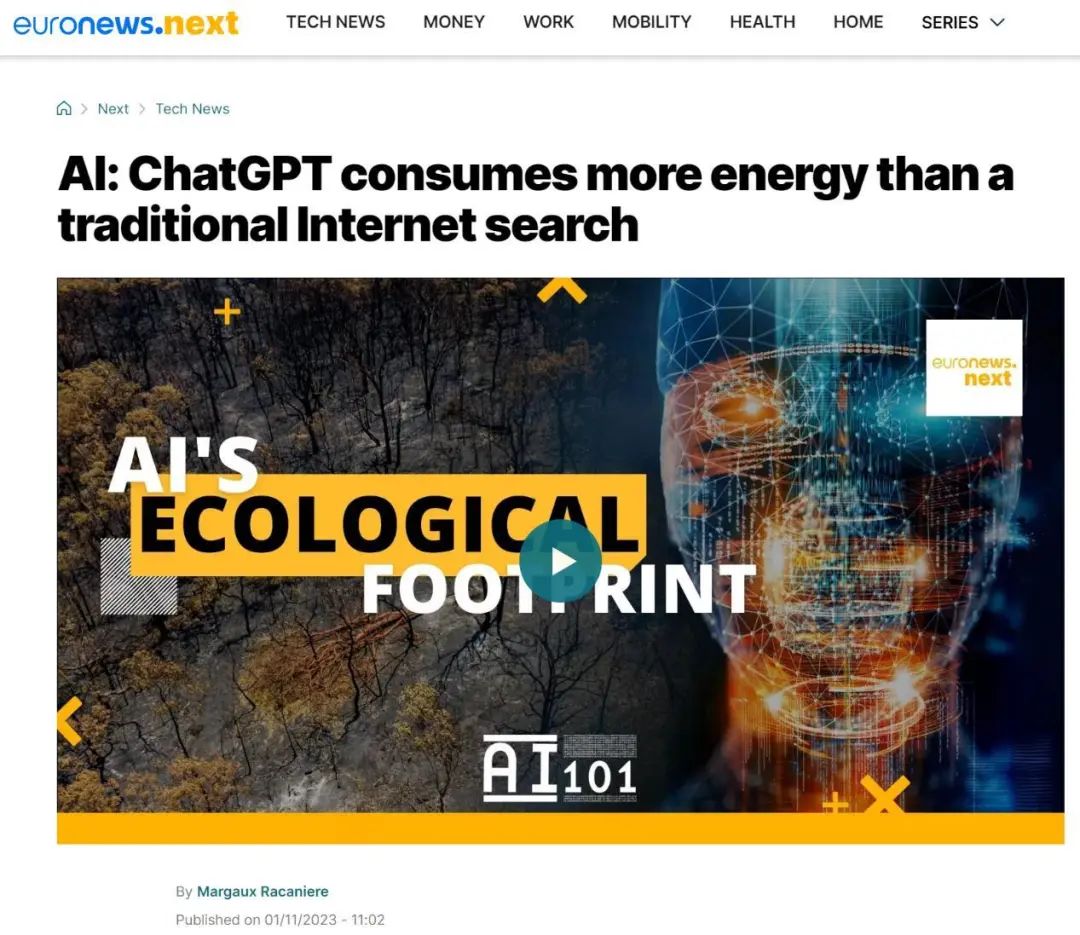搜索
标题摘要内容
和ChatGPT聊天费水?到2027年,全球AI竟然要用这么多水
来源:
|
作者:国际交流部
|
发布时间: 2024-01-15
|
1958 次浏览
|
分享到:

In a paper due to be published later this year, Ren’s team estimates ChatGPT gulps up 500 milliliters of water every time you ask it a series of between 5 to 50 prompts or questions. With nearly 1.5 billion users a month, that adds up fast.


AI耗水量增长迅速
数据显示,现在人工智能所需要的算力预计每100天就会翻一番,并且在未来五年内可能会增长超过一百万倍。研究人员预计,到2027年,全球范围内的AI需求可能会需要消耗掉66亿立方米的水资源,相当于丹麦年总用水量的4至6倍或英国年总用水量的一半。

除了耗水,还费电
除了耗水外,人工智能还消耗大量的电。
据《纽约时报》此前报道,一项研究分析称,到2027年,人工智能服务器每年的用电量将在85到134太瓦时(Twh)之间。这相当于阿根廷、荷兰和瑞典一年的用电量,约占目前全球用电量的0.5%。
《纽约时报》:“人工智能可能很快需要相当于整个国家的电力

Data centers, essential for AI training, account for almost 1% of the world's energy consumption. This figure is set to rise over the next few years.
然而,这些数据中心排放的二氧化碳量取决于它们所在国家是用煤炭、天然气还是可再生能源发电。在微软和艾伦人工智能研究所资助的一篇论文中,研究人员表明,通过变更人工智能的训练地点,有可能将操作的二氧化碳排放量减少75%。
But these centres emit varying amounts of CO2 depending on whether their base country produces its electricity from coal or gas, for example, or from renewable energies. In a paper funded by Microsoft and the Allen Institute for Artificial Intelligence, researchers showed that by modifying the training location of an AI, it was possible to reduce the operation's CO2 emissions by 75%.
不过,报道指出,尽管人工智能会对环境产生影响,但它在对抗全球变暖方面也发挥着正面作用。例如,人工智能可以帮助气象学家预测极端天气事件,或优化工业流程以减少二氧化碳排放。
Despite their environmental impact, AIs have a role to play in the fight against global warming. For example, they can help meteorologists predict extreme weather events, or optimise industrial processes to reduce CO2 emissions.
如今,开发者面临的挑战是透明度。大多数公开的人工智能大模型,都没有透露这些模型是在哪里训练的,或者使用它们的碳成本。
The particular challenge for developers today is transparency. Most publicly available AI models do not reveal where the models were trained, or the carbon cost of using them.
报道认为,当用户了解到这些信息时,他们可以做出更明智的选择。例如,在使用ChatGPT解答一些基础问题前,可以先在浏览器搜索下问题答案,因为浏览器搜索所消耗的能源更少。
欧洲新闻电视台:“ChatGPT比传统的互联网搜索耗能更多”

综合来源:央视财经,欧洲新闻电视台,纽约时报,美联社
生态要素中心
教育中心

信息公开
